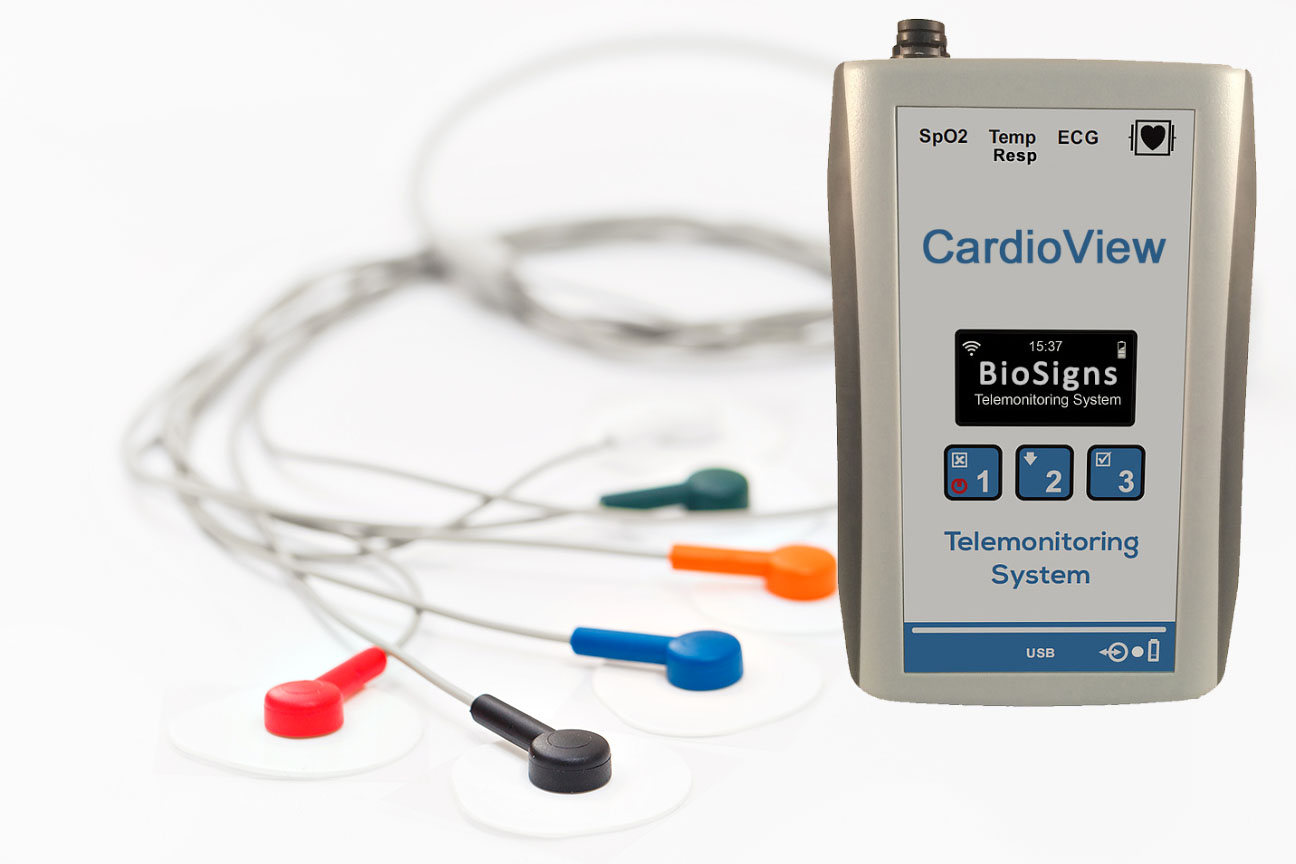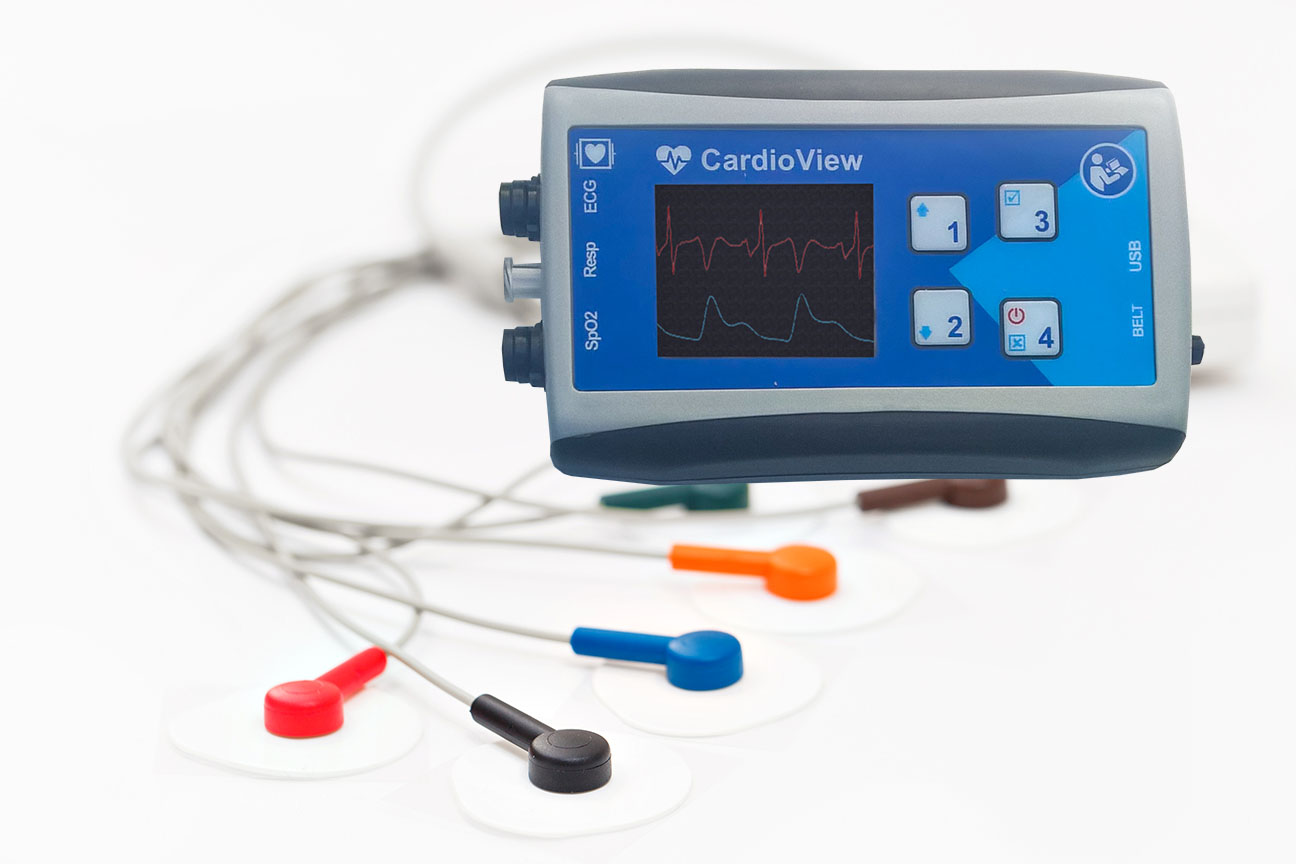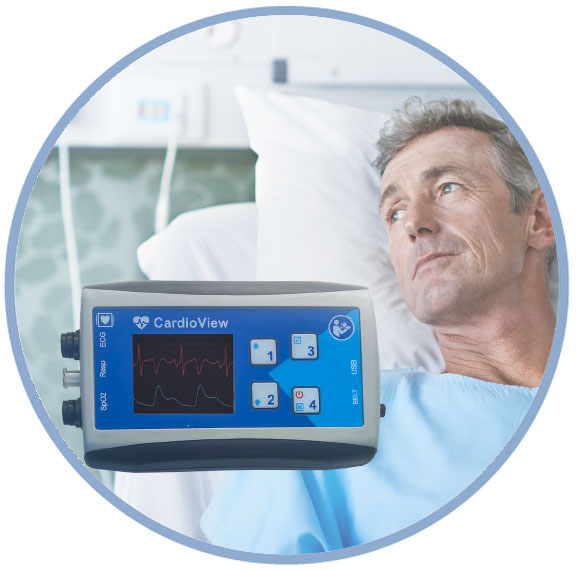- +1 800 433 4609
- |
- Request Info
- |
- Login
Patient's heart at your fingertips
Any patient can now be kept under full surveillance.
Cardio and VitalSign Monitors
Knowing a patient’s vital signs tells a clinician a lot about them. Get an overview of temperature, blood pressure, pulse and respiration rate, and a clinician gets valuable data on whether they’re healthy, feverish, recovering well from surgery, or in danger of an adverse event like heart attack or fainting. A record of vital signs over time tells ever more, letting clinicians know whether their condition is stable, changing gradually, or in dramatic decline.
The CardioView system provides all this information in one easy-to-use app. It eliminates the need to visit patients just to check vital signs, and ensures that when a clinician arrives in a patient’s room, they’re already equipped with all the basic info they need—so time with patients can be more efficiently spent probing deeply into their condition and symptoms.
How does our system work? A comfortable, noninvasive device is hooked up to the patient and transmits data to the CardioView server in real time using Wi-Fi or 3G. From there, it can be accessed from our intuitive PC Software and smartphone apps.
This allows near real-time monitoring of:
- ECG (3, 5 and 12 leads)
- SpO2/desaturation
- Photoplethysmogram
- Respiration
- Skin Temperature
- GPS position
- Beat-to-beat Non-Invasive Blood Pressure
Key specifications
The CardioView system handles logistical issues so patient care providers don’t have to.
It’s equipped with a range of technological features that makes checking patient status nearly effortless:
- Light weight: 250 grams
- Ambulatory
- ECG and vital signs in single device
- 30 hours Wi-Fi on single charge battery live
- Automatic Early Warning Score
- Digital bi-directional data with EHR's
- 32 GB Internal Backup Memory
- ECG monitoring by 3-leads of unlimited number of patients simultaneously
- Continuous ECG monitoring by 3-leads for extended periods of time
- Monitoring via mobile internet networks
- ECG retrospective analysis using Holter monitoring programs
- Compact ECG recorders
- Automatic classification of ventricular complexes by their form
- Automatic analysis of ventricular and supraventricular
- Analysis of the ST segment dynamics
- Calculation of the spectral and temporal variability rate per day for each hour of recording and at 5 minute intervals
- Calculation of the QT interval value by the pick and at the end of T wave (QTa and QTe)
- Analysis and graphical calculation of the QT interval values dependent from RR per day
- Automatic selection of stimulus artifact signal and analysis of pacemakers
- Automatic calculation of HR, RR, ST trends (all channels)
- Frequent analysis of cardiac arrhythmias
- Analysis of the P wave, including the definition of PQ interval
- and analysis of events of type P on T
- Analysis of QRST alternation
- Detection of apnea episodes
This technology takes care of the basics, but it goes well beyond them. The system performs full real-time ECG arrhythmia diagnostics including ventricular and supra-ventricular rhythms, RBBB, LBBB, AV block, Pause, QT, QTc, ST changes, ECG lead map, HRV, Automatic Early Warning Score and many others. That means less time spent performing basic tests, and more time talking to and treating patients—creating more consistent care and better results.
HW9A Device

HW9E Device



